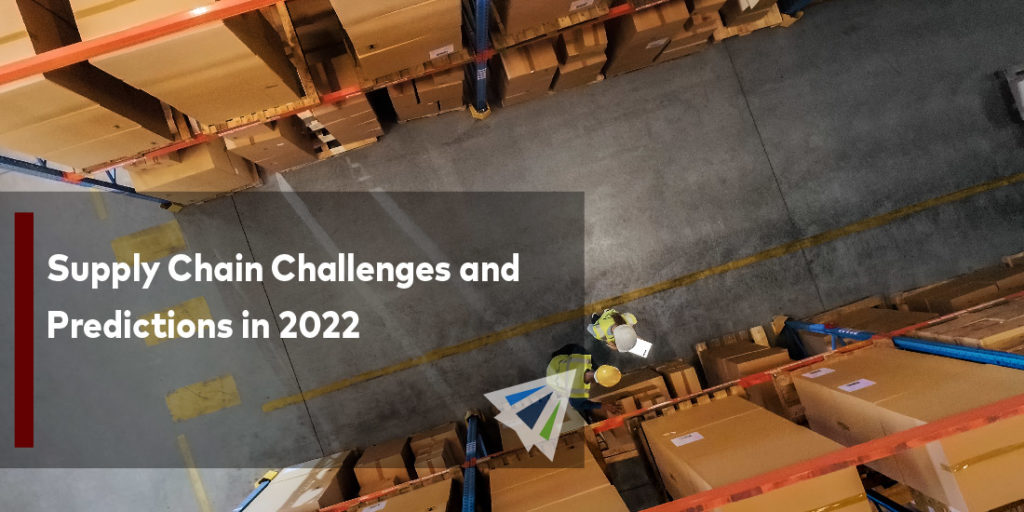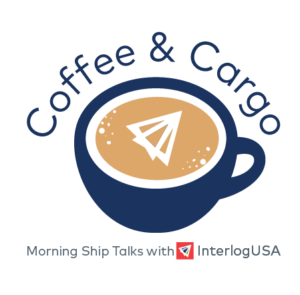Competitive Edge
February 9th, 2022
Stay Current with Interlog’s Weekly Newsletter:
Sign up for our next Coffee & Cargo webinar –> CLICK HERE
To watch last month’s webinar –-> CLICK HERE
Ocean Freight Market Update
Headlines
- The U.S. Senate introduced on Thursday, the Ocean Shipping Reform Act (OSRA) aimed at promoting U.S. exports while curbing carriers’ power over both container service and equipment fees charged to shippers.
- Long Beach and Los Angeles ports announced yesterday that they will wait until Feb. 11 to consider the start of the “Container Dwell Fee.” This comes as the movement of aging cargo on their docks has improved since the fees were announced last October.
- Pennsylvania Governor Tom Wolf announced a $246-million state investment into the Port of Philadelphia.
UPDATE: Notable U.S./Canada Port Congestion
- New York/Newark: 23 Backlogged Vessels
- Charleston: 24 Backlogged Vessels
- Norfolk/Newport News: 43 Backlogged Vessels
- Los Angeles/Long Beach: 64 Backlogged Vessels
- Note: This does not include LA/LB bound vessels waiting at ports of origin
- Vancouver: 78 Backlogged Vessels
IMPORT: Asia to North America (TPEB)
Recent Developments:
- Congestion and trucking capacity shortages remain critical
- Destination delays and moving departures at origin continue to decrease schedule reliability and on-time performance
- Uncertainties when production will resume on origin-side remains at play as well as COVID-related labor shortages
- Demand on TPEB lanes is expected to remain strong into the next month
Rates: Rate levels remain elevated. Shippers with urgent cargo or those looking to restore empty inventories are paying premium rates to secure space.
Space: Space remains critical.
Capacity/Equipment: Capacity remains severely under. Equipment deficits critical.
TIPS: Book at least 3-4 weeks prior to CRD. Strongly consider premium service and carrier IPIs through the PSW gateway. Be flexible as it comes to equipment and routing.
IMPORT: Europe to North America (TAWB)
Recent Developments:
- Schedule reliability is not expected to improve any time soon due. Flexport reports it is still around 33-35% compared to 60-65% two years ago
- Port congestion remains manageable at most USEC ports
- USWC ports, notably Long Beach/Los Angeles, remain heavily congested
- Yard congestion at LB/LA has slightly improved
Rates: Rates levels to remain notably high. Further increases are expected for February.
Space: Space remains critical, especially for the USWC.
Capacity/Equipment: Capacity remains tight for both North Europe and Mediterranean services. Equipment availability at ports, however shortages remain at inland terminals.
TIPS: Book 5 or more weeks prior to CRD. Strongly consider premium service for higher reliability and no-roll guarantees.
EXPORT: North America to Asia
Recent Developments:
- Diminishing schedule integrity is contributing to void sailings, delays, vessel cut-offs at ports, and challenging post earliest return dates
- Vessel arrivals remain fluid for USWC POLs
- For the USEC, Savannah operations have seen improvements, but New York has seen increasing delays
- Rail availability for USWC has become limited with carriers firmly adhering to allocations
Rates: GRI advisories are out for transshipment ports and Oceania destinations for early February.
Capacity: Available capacity remains fluid for USWC POLs. USEC capacity has become for readily available.
Equipment: IPI origins remain adversely affected by deficits on containers and chassis. Standard equipment availability has not been an issue, but special equipment is remains elusive.
TIPS: Book 4 to 6 weeks prior to CRD to secure equipment and vessel space.
AIR FRIEGHT: United States
- Demand to Asia is set to decrease during Chinese New Year. Europe and Latin America will remain stable with its demand.
- Airlines are back on schedule following cancellations from last week’s Nor’easter winter storm.
- Larger shipments from major outbound gateways can take 2 to 3 days from booking to uplift.
- LAX/ORD/JFK terminals have reduced the backlog of inbound cargo rendering a positive effect on the export side.
- Rates to Latin America, Europe, and Asia have not seen considerable changes, but fuel costs are slightly higher.
- Average dwell time at European hubs is slightly reducing as congestion improves.
TIPS: Book early considering the current dwell time at airports.
Tip Of The Week: Registering as a TSA Known Shipper
If you are a U.S. shipper, registering as a TSA Known Shipper will provide you access to ship on passenger aircrafts; increasing your control over price, transit time, and more. Sign up or learn more now!
Freight News
Number of container ships waiting for berths at Ports of LA/LB down since Jan. 9th
The ports of Los Angeles and Long Beach have dealt with uncharacteristic congestion for the greater part of the pandemic, especially in the second half of 2021. Now, a sliver of hope appears, as the number of container ships that were waiting for berths at the ports of LA/LB fell to 78, on Tuesday, February 8th – which is down 23% from the 101 ships at the beginning of this month, and down 28% from the all-time high of 109 ships on January 9th, reported Freightwaves.
Will this remain consistent or was this just due to other factors? Many experts remain confident that while it is not getting worse, it is also not getting better, as things will continue to take some time to get back to ‘normal’. One expert, Phil Levy, told Freightwaves, that “for you to sound the definitive all-clear, you need a decrease in demand, you need no problems on the supply side, and you need a period when you can clear everything out before peak season begins.”
So while port congestion at Los Angeles and Long Beach isn’t where it needs to be and still has a ways to go, it still is nice to seem some glimmer of hope that waiting for berths at LA/LB have decreased slightly.
Rollout of 5G wireless service being postponed by AT&T and Verizon - what does this mean?
In the middle of January, AT&T and Verizon both announced that they would postpone the roll out of 5G wireless service near some airports, after concerns from some of the nation’s largest airlines warned that the service would interfere with aircraft technology – and would produce major flight disruptions for cargo and passenger planes. In a letter to the Biden administration, airline CEO’s have asked that 5G be implemented everywhere in the country EXCEPT within the approximate two miles of airport runways at affected airports as defined by the Federal Aviation Administration (FAA).
It’s important to note that this is regarding the transmission towers for 5G, NOT the use of 5G in cellphones. The main issue is that 5G transmission will disrupt the signals necessary for the proper operation of several systems on transport category aircrafts, and one of the most important, is the radio altimeter which gives the pilot critical information about the aircraft’s height above terrain. Those radio altimeter systems give pilots verbal warnings on take off and landings, and how close they are to the ground below the airplane, Les Abend, a retired Boeing 777 captain told Freightwaves.
This has an impact on Boeing 747-8 freighters and all 777 widebody aircrafts as a new FAA regulation, prohibits those from landing at airports where 5G towers may interfere with onboard safety equipment, which could impact major cargo airlines.
Sign up for our
industry answers
Our team works to provide valuable, unique, and relevant content to assist you in finding solutions. Sign up now.

